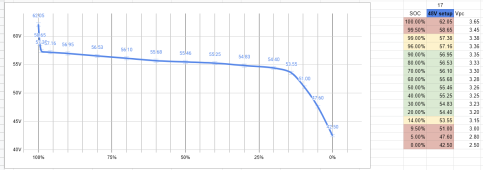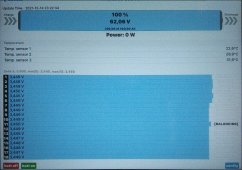This is one of my favorite diagrams to post here (not sure why I like it so much)...
Sheet5 Lithium Iron Phosphate Charge Voltage Range (LiFePO4) What to charge your cells/batteries/packs to. (SOC),Never More than,3.650,Shown is the "FLAT CURVE" of LiFePO4 cells/batteries/packs. What to not discharge past. (DOC),Nominal,3.200,The steap parts on the left and the right are the "Le...

docs.google.com
But generally, they say if you stay in the green, the cells will last longest.
Some people even go 20%-80% (instead of 20%-90% or 10%-90% even)...
I guess it's a tradeoff, DoD for longevity. There is also a compromise of this 20 year expectancy in technology and innovation. Maybe your battery will last 20+ years, but maybe in 10 years a new battery technology will come along that is 1/4 of the price for twice the kW/h and make all the savings not as important by then.
The only issue I'd have with 18 cells though, if your batteries accidentally got charged to 100%, will this bring your inverter beyond it's max voltage? Will it shut itself off or will it fry it or anything? As long as the potential maximums and minimums of the battery bank won't put any of the equipment at risk for damage, then theoretically it should be ok.
Assuming you will use an 18s BMS (aka 16s-20s BMS)
Why not just use 16s and run in the desired SoC range (lower average voltage)? What is the supported input voltage range on your Victron?




